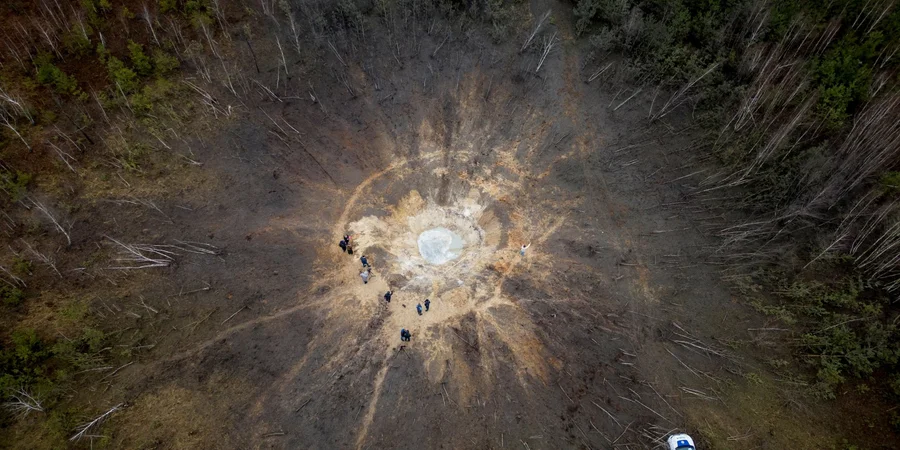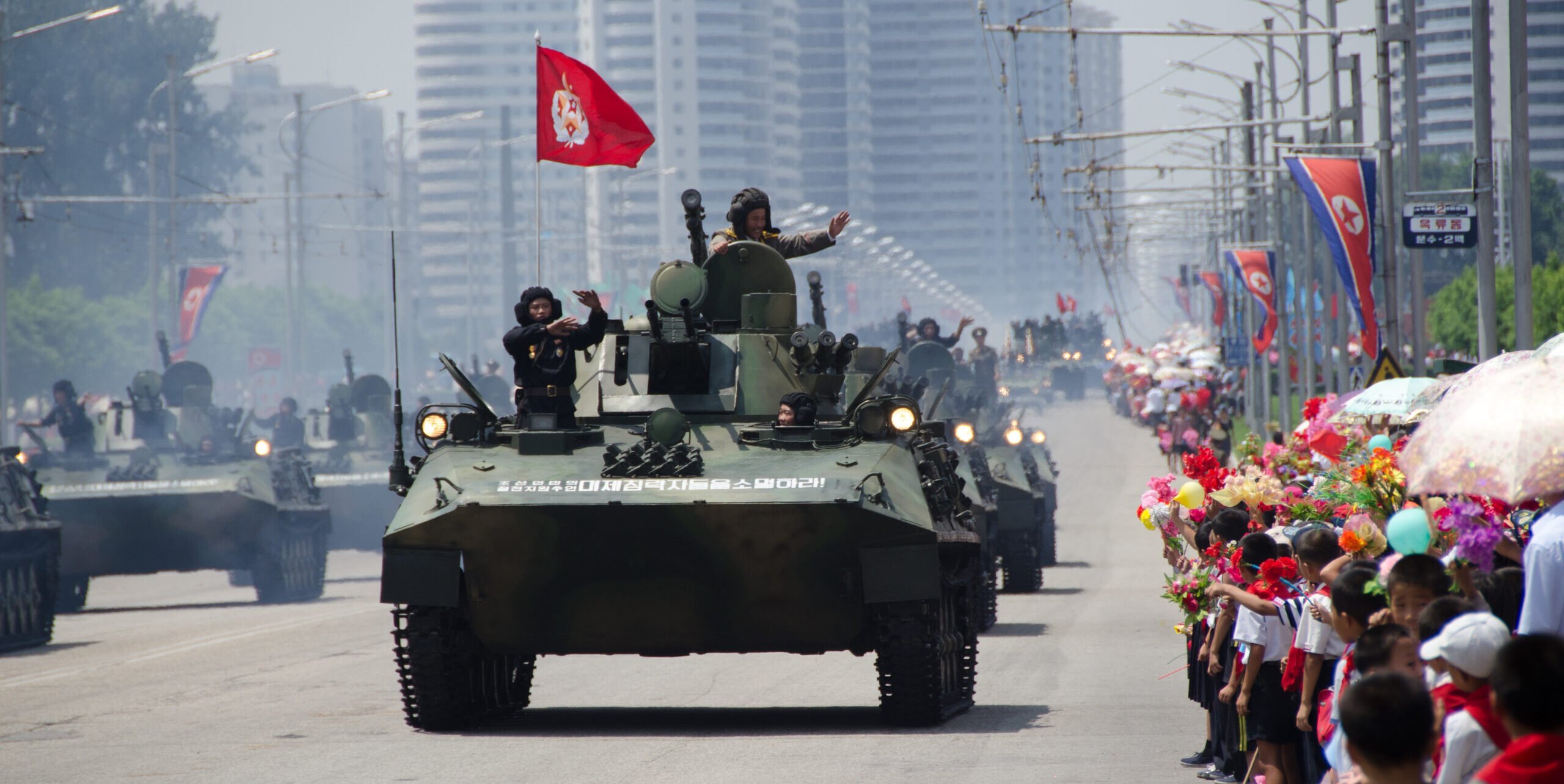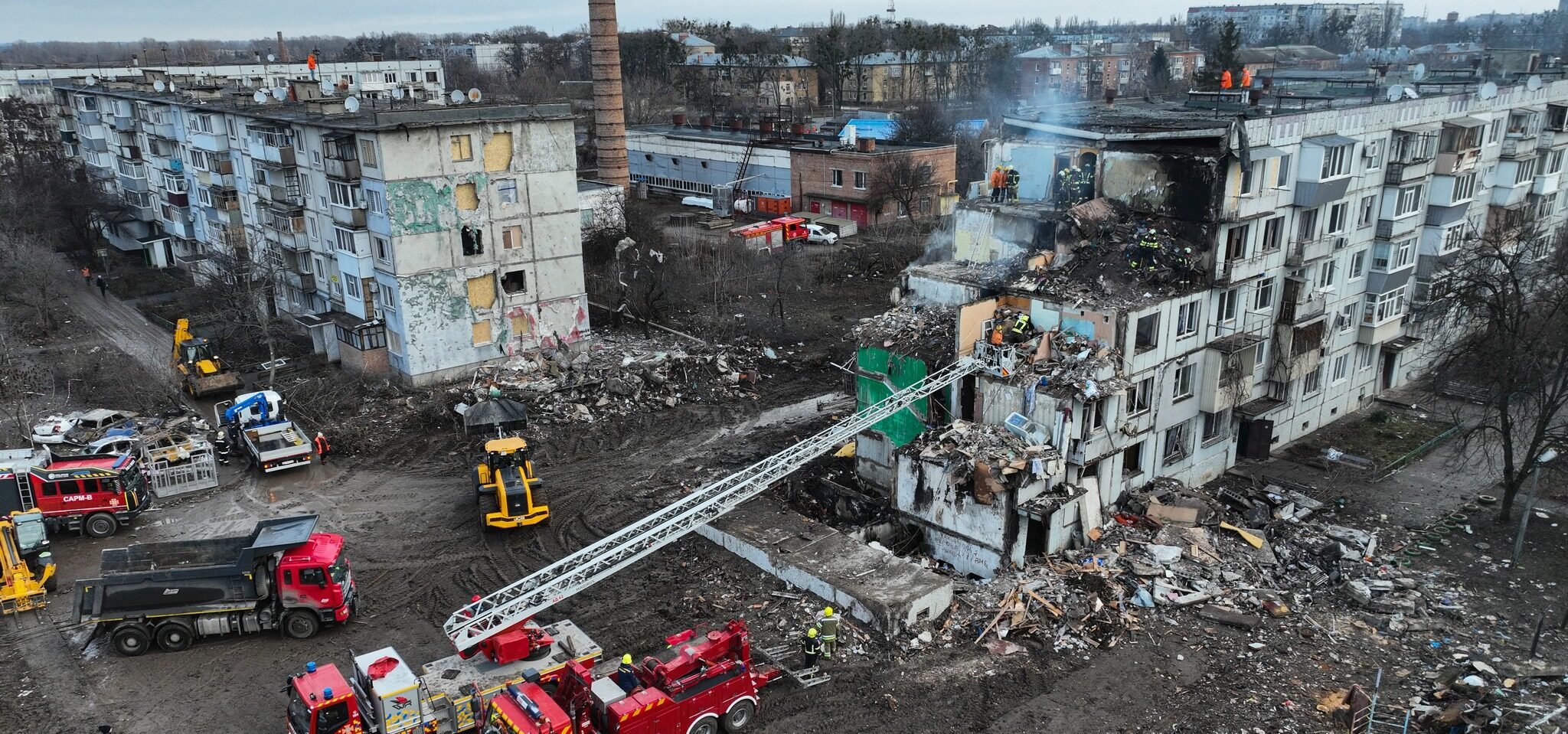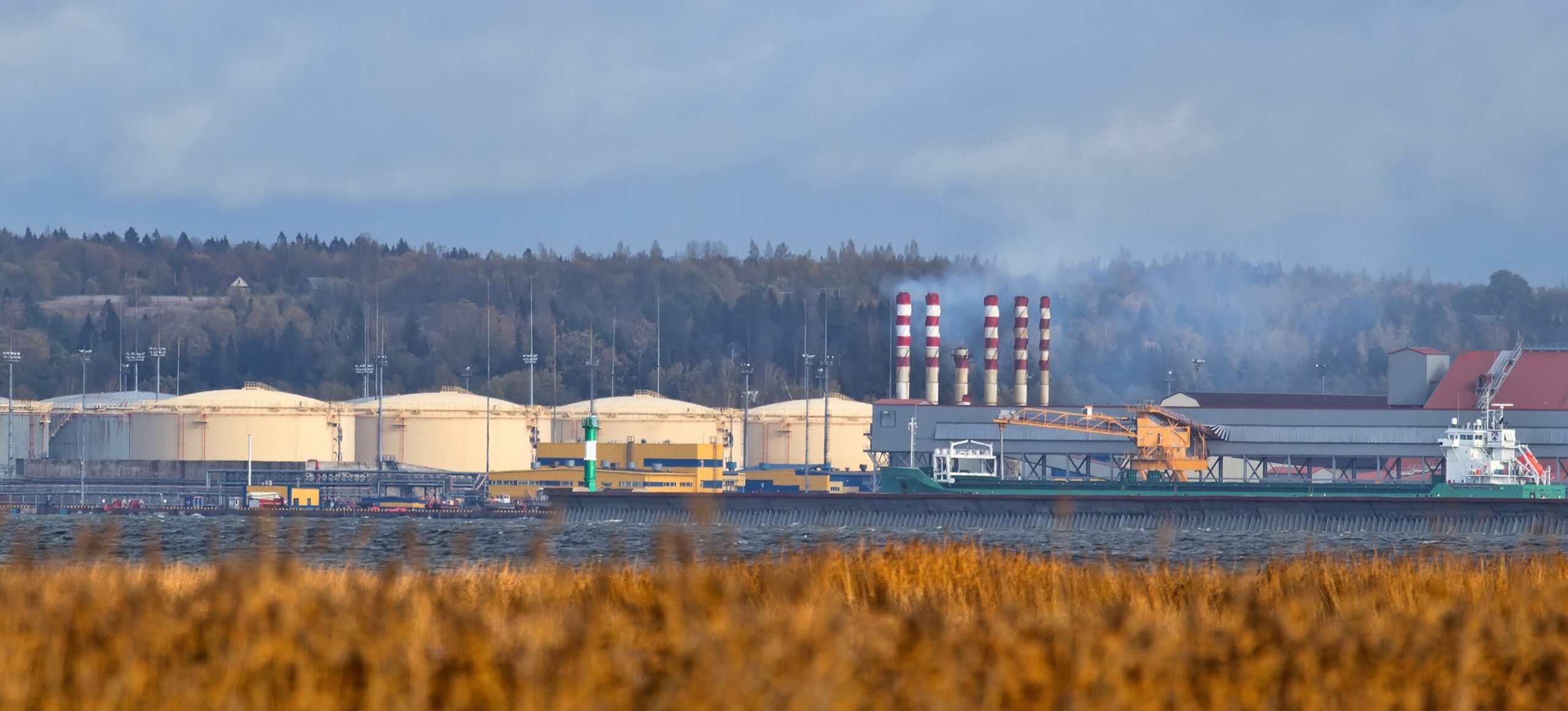
On the night of February 15, Russia launched another massive attack on Ukraine. Explosions were heard in Kyiv, Kyiv Oblast, and Lviv. One of the missiles left an enormous crater in a forest near Bucha in Kyiv oblast, according to local authorities.
The explosion thundered close to residential buildings near the village of Buda-Babenetska, located between the towns of Bucha and Borodianka. The blast wave damaged dozens of buildings, and there were no reported civilian casualties.
The experts from “Defense Express,” a Kyiv-based media and consultancy company, state that it is impossible to determine the exact type of missile from analyzing the photos of the crater. “Firstly, the size of the crater depends directly on the soil. If the soil is sandy, the crater will be larger than in the case of rocky soil. It also depends on the detonation mechanism. If the warhead detonates after embedding in the soil, the crater will again be larger. There are many variable factors – even the temperature of the soil affects this,” said Oleh Katkov, the editor-in-chief of Defense Express.
Meanwhile, the “Informator” online news site reported that law enforcement officials anonymously stated that a North Korean missile caused the crater. The Command of the Air Force of the Armed Forces of Ukraine reported that the Russians had used six ballistic missiles Iskander-M and/or KN-23, one of which was shot down on February 15
“Thus, it is entirely possible that the crater near Bucha was indeed created by a falling KN-23 missile, but there is just as much possibility that [the crater] was created by another Russian missile falling. However, the analysis of the crater based on photos cannot provide conclusive proof. Moreover, the actual combat weight of the KN-23 warhead is officially unknown, and there is only an assumption that it is 500 kg,” emphasized Defense Express.
Cover: Reuters/Thomas Peter









